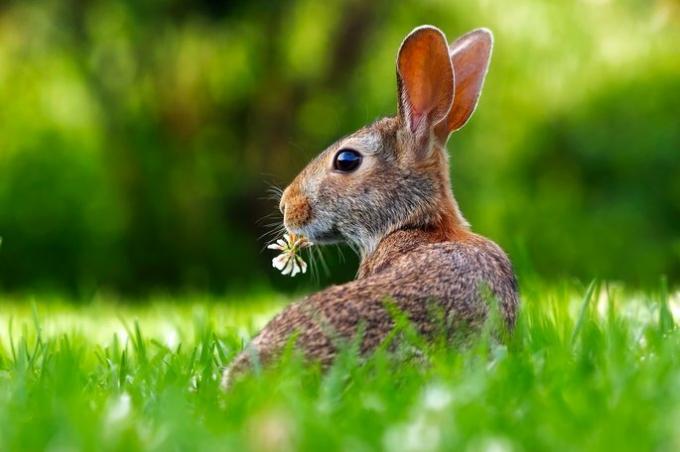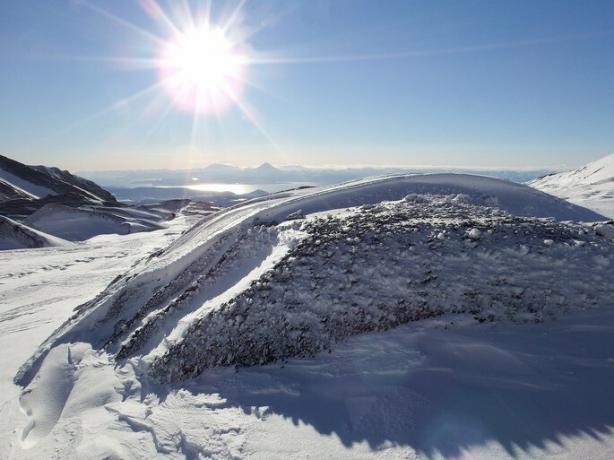Biotic and abiotic factors: what are they, what are they and examples
Biotic factors are all plants, animals, fungi, protozoa and bacteria that in one way or another interact in a given physical space.
Inert or abiotic factors are the conditions of light, temperature, minerals, soil and water, among others, found in a physical space that determine the existence of living beings.
Both biotic and abiotic factors make up the ecosystem. In ecology, the ecosystem is the set of communities of living beings that interact with each other and the elements of the environment that surrounds them.
Let's imagine for a moment that an ecosystem is a play. The biotic factors are the participants: actors, directors, audience and technicians. On the other hand, the abiotic factors will be the environment of the theater, the stage, the seats and the lighting.
| Biotic factors | Abiotic factors | |
|---|---|---|
| Definition | Biological component of the ecosystem | Physical and chemical component of the ecosystem |
| Which are |
Plants Animals Mushrooms Protozoa Bacteria |
Light Temperature Air pH Minerals |
| Classification |
|
|
| Examples |
|
|
Biotic factors

Biotic factors are the biological components of an ecosystem. It includes all living organisms and microorganisms, such as plants, animals and bacteria, that are found in a delimited region and that interact with each other.
Among the biotic factors we can find:
- Producer beings: represented by plants that produce their own food from sunlight, water, and carbon dioxide.
- Consumers: represented by animals that have to feed on plants (herbivores) or other animals (carnivores). Animals such as humans and pigs consume plants and animals (omnivores), while worms and flies feed on organic waste (detritivores).
- Decomposing beings: represented by the organisms that transform organic compounds into inorganic ones, such as fungi and bacteria, and from them obtain their nutrients.
Examples of biotic factors
- Rodents such as mice, plants such as cacti and small shrubs, as well as reptiles such as snakes and lizards interact in the desert ecosystem.
- Plants like lichens and mosses, bacteria like Proteobacteria Y Cyanobacteria, archaea and protozoa like amoebas, animals like the arctic rabbit and the fox are the biotic components of the tundra.
- Large trees, palm trees, bromeliads, orchids, climbing plants, diversity of decomposing fungi, great variety of insects, amphibians such as frogs and toads, monkeys, gorillas and a diversity of birds, such as toucans and macaws, make up the jungle ecosystem tropical.
Types of relationships between biotic factors
Biotic factors interact with each other in a positive, negative, or neutral way. These interactions can be between individuals of the same species or intraspecific and between different species or interspecific. Among the interspecific relationships are:
- Mutualism: it is the interaction between species where both win. For example, butterflies feed on the nectar of flowers and at the same time carry pollen to other flowers, promoting fertilization between plants.
- The competition: is the relationship that is established between beings when they feed on the same plant or animal in a region. For example, jaguars and pumas are carnivorous felines that compete for the same prey.
- Predation: occurs when one species feeds on another. For example, wolves feed on other animals, such as cows. One of the great problems of livestock in mountainous areas is the attack of cattle by wolves.
- Parasitism: It is the relationship that occurs when one of the organisms takes advantage of another, damaging it. We find it in the blood-sucking insects of mammals.
- Commensalism: it is established if one species takes advantage of another without causing harm. For example, remoras take advantage of the debris left behind by sharks.
You may also be interested in seeing:
- Flora and fauna.
- Biome types.
Abiotic factors

Abiotic factors are those elements of the ecosystem that support and determine the functions of living beings. They are called "abiotic" (to= without and bios= life) because it corresponds to the non-living element of the ecosystem. We can distinguish two classes of abiotic factors:
- Physical: includes all those elements that are part of the environment and that are not consumed, such as light and its intensity, the amount of rain or snow that falls in a certain place and time, the wind, the type of I usually.
- Chemicals: include the main nutrients that can be found in the air, water or soil, such as carbon, nitrogen, phosphorus, hydrogen, oxygen, sulfur, iron, copper, calcium, and you go out.
Abiotic factors determine the survival of the species. For example, seed germination is favored between 20ºC and 30ºC. At these temperatures, plants also grow faster.
Examples of abiotic factors
- High temperatures, poor, dry soils, and low levels of humidity that only allow life to a few organisms characterize the abiotic component of the desert.
- Low temperatures most of the year, with strong winds, frozen soils and reduced solar radiation predominate in the tundra ecosystem.
- Stable average temperatures and sunlight throughout the year, with abundant rainfall and fertile soils favor the great biodiversity of the tropical forest.
You may also be interested in seeing Types of ecosystems.
References
Begon, M., Townsend, C.R., Harper, J.L. (2006). Ecology: from individuals to ecosystems. 4th. ed. Blackwell Publishing. Carlton, Australia.
Kaushik, A., Kaushik, C.P. (2010). Basics of environment and ecology. New Age International Publishers. New Delhi.
Monge R., S. (2015). Didactic proposal for the teaching-learning of the structure and processes in the ecosystem for upper secondary education. [Master's Thesis] National Autonomous University of Mexico, Mexico.

